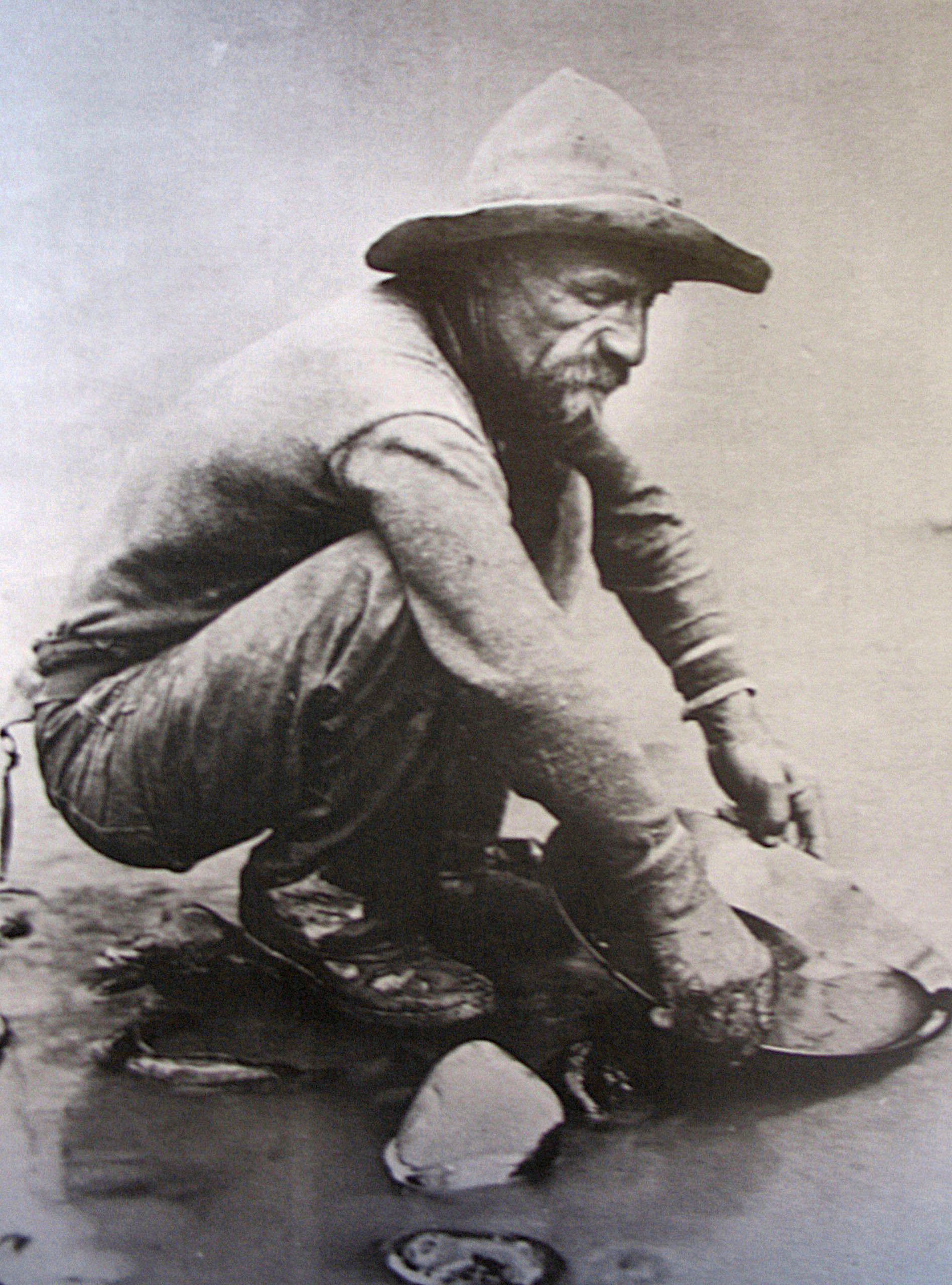
Many Americans have stories of 49ers in their family lore. Most,
however, are not provable, only accounts with no proof. With the case of the
Mott letter collection, we have verification of several members of the family
travelling from Kentucky to California in 1849.
Several overland migration routes from the east coast to the west
coast of the United States were taken by those wishing to find gold. One path
was the California Trail. Which, from the descriptions in the letters
collection, is the one the Mott family members took.
The first letter which mentions travel to California is dated 26
January 1849. In a letter from Burgess Mason Long to Armistead Randolph Mott,
Burgess stated:
“I received a letter from Uncle Jack on
the 24th he says that he is going to California to dig for gold.”[3]
Uncle Jack refers to Leonidas Jackson Cralle, son of Beverly Lindsey
Cralle and Nancy (Ann) Rosser. His sister Calista Cralle married Armistead Long
who was the uncle of Armistead Randolph Mott through his mother, Mary
Chichester Long.
The second letter addressed to Armistead was dated 12 December 1849
from his sister Mary Eleanor Mott Martin.[4]
In it, she relates to him the news which came to her in another letter
describing the travels of several of their family and friends. This included Mr Cralle, most likely Uncle
Jack referred to by Burgess.
 |
| Relationship of Burgess Ball Long to Armistead Randolph Mott |
Based on the places described in the letter from Mary, a large party
left Union County, Kentucky and primarily followed the California Trail to
Sacramento. The known routes for the gold rush, and westward, migration is below. By comparing this information to the descriptions in the letter, it
becomes clear which overland route was taken.
 |
Map of the California Trail from South Pass, Wyoming to
northern California, including the many end trails. From FamilySearch Wiki.
|
Group 1 consisted of the Winston family (Gus, Gerry, William, and Dr.)
and Mr Robertson. From the letter:
“They endured great hardships the other
side of the Salt Lake, and in crossing the snowy mountains – owing to the burning
of the grass … they passed the sink of the Humboldt River, their oxen became
weak they had to abandon it … they walked the rest of the way.”
Looking at California Trail image they most likely travelled the red line
for the California Trail and then the pink line for the Truckee Trail. Since
the Salt Lake was mentioned, it is unclear if they took one of the cut-offs
that merged into the California Trail. The letter states they made Sacramento
in October of 1849.
Group 2 consisted of Gip, Mr Cralle, Sam Taylor, and William Edwards.
From the letter:
“Mr Cralle’s company went by the Salt
Lake and stopped with the Mormons – sold their wagons and effects and went the
rest of the way on pack mules.”
To get to Salt Lake (presumably Salt Lake City), the groups parted in
Wyoming or Idaho. Group 2 took either the Salt Lake Cutoff, the dashed red line
on the image, or Mormon Trail, the dashed purple line. This group then
had two choices to continue to California. Either the Hastings Cut-off or
Central Overland Trail. To end in Sacramento, this group then took the Carson
City Trail, shown as the solid blue line on the above image.
Group 3 was described as “Dr Jones and others”. From the letter:
“Dr Jones and many others took another
route, shorter but farther north and said to be better, but they have not heard
of them for three weeks.”
It is unclear which route the passage describes. Perhaps the Oregon
Trail or a cut-off showed as green lines on the trail image.
Migration routes such as these are crucial for family history research
primarily as they place people in a time and a place. Mainly because several of
these men did not return to Union County, Kentucky, for example, Leonidas
Jackson Cralle stayed in southern California for the rest of his life.[5]
Second, letters describing the migration of family units show how
family groups migrated together. It is hard to determine family connections by
looking at names written on a piece of paper. However, with the aid of two
letters, familial and community relationships not measurable in other ways were
defined.
[1] Corporation for Public Broadcasting. (2019)
“The California Gold Rush.” American Experience. https://www.pbs.org/wgbh/americanexperience/features/goldrush-california/: May 2019.
[2] History.com Editors. (2019) “California
Gold Rush.” History Channel. https://www.history.com/topics/westward-expansion/gold-rush-of-1849: May 2019.
[3] Long, Burgess M. (1849) Letter to Dr
Armistead R. Mott, 26 January.
[4] Martin, M. E. (1849) Letter to Dr Armistead
R. Mott, 12 December.
[5] Death index (CR) USA. California. CRALLE,
L.J. 8 January 1909. California, Death and Burial Records from Select Counties,
1873-1987. https://www.ancestry.com : accessed May 2019. Monumental
inscriptions. USA. Armona, Kings County, California. 6 January 1909. CRALLE,
Leonidas Jackson. Find a Grave Memorial: 52491006. https://www.findagrave.com : accessed May 2019.
No comments:
Post a Comment